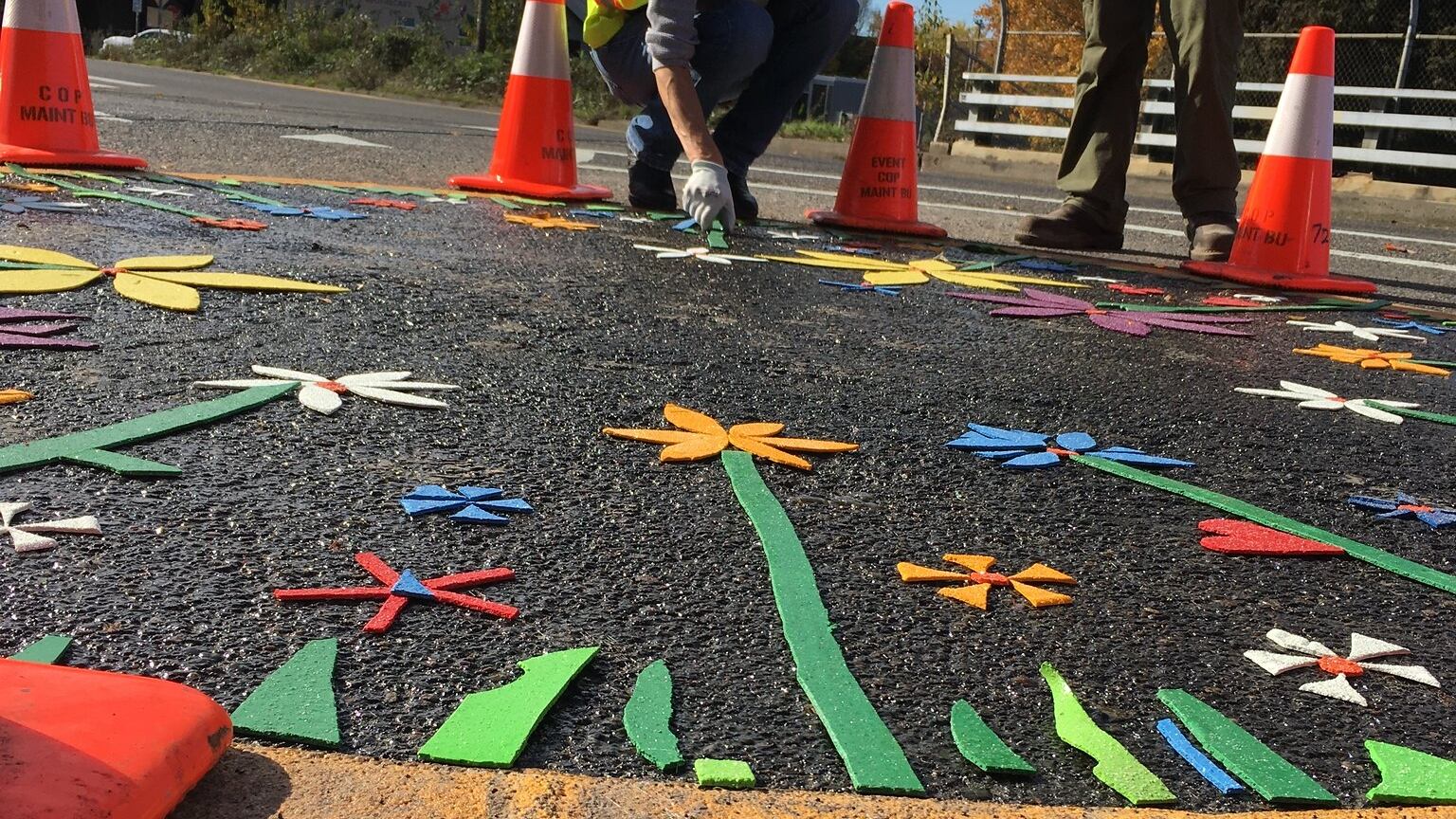On the last Halloween before quarantine, Kirstin Byer received one of the greatest compliments of her entire career.
In 2019, a local design company dressed up as a different bike lane character it found around the city—a jellyfish, a Timbers fan, a purple mouse with a big block of cheese—all of which Byer designed herself.
“It just gives my heart joy that someone’s enjoying something I might’ve had something to do with,” says Byer, a recently retired maintenance supervisor for Portland Bureau of Transportation. “There’s no better feeling.”
Portlanders have Byer to thank for the bike lane art that’s become ubiquitous around the city. Twenty-one years ago, Byer started the tradition of using scrap material to decorate the white silhouettes of cyclists that mark lanes around the city, transforming the symbol into everything from a scuba diver to a tennis player, a bike-riding slug to David Bowie.
It began in 2000 when Byer noticed that members of her pavement markings crew would use leftover materials to add small details to the generic stick-figure cyclists, like a white rectangle for a hat or a penny in the center of a wheel.
Byer took it several steps further. She started taking scrap thermoplastic paint home so she could heat, cut and rearrange the material into increasingly intricate designs. Over the past two decades, Byer spent countless hours pioneering the medium of road-marking art, and she did it all on her own time, after work hours.
“It was like knitting or crocheting, but I weld plastic,” she says. “It was meditative.”
Byer retired last March, but the tradition she started is still very much alive. Bike to Books, a program where kids can submit designs for city streets, will continue past Byer’s retirement. She’s long encouraged others to make their own designs. Now, former colleagues regularly send her pictures of new bike lane art they’ve found or installed themselves.
“I had my turn,” says Byer. “I’m happy to pass the torch and let others use their own creativity.”

